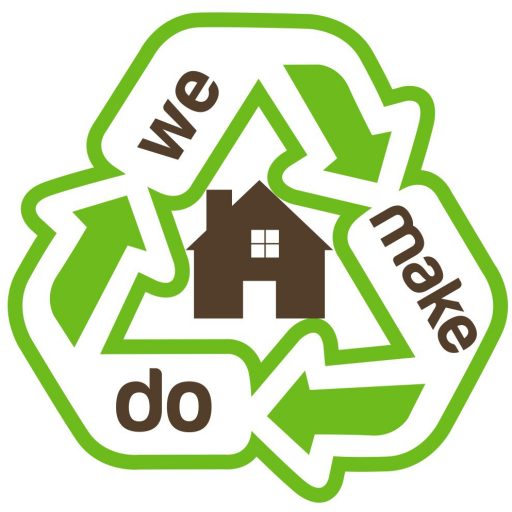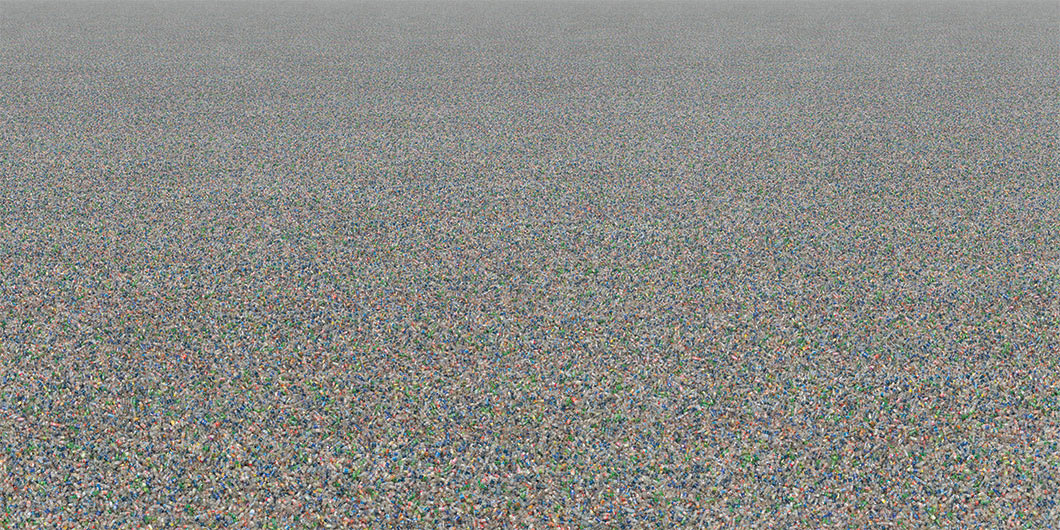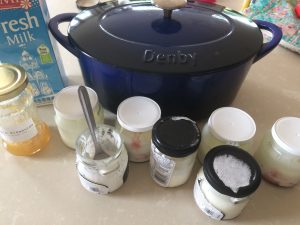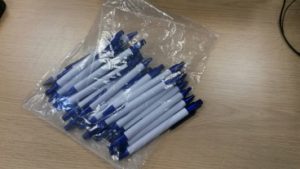Plastic Bottles, 2007. by Chris Jordan
Depicts two million plastic beverage bottles: the number used in the US every five minutes.
As our “Plastic Free July” (PFJ) experiment continues, we have passed through the trough of disillusionment and are now on the upswing of more realistic hopes coupled with some renewed enthusiasm for the task at hand. Our plastic recycling bin although not in as good shape as we’d hoped, is much improved over earlier months. Most of the contents are a result of earlier purchases being used up and also from items left behind by visitors (more on that later).
We were starting to learn to live without purchasing some things that we just couldn’t find in any non-plastic packaged form, then it became apparent that some of those food items could be made at home from raw ingredients that weren’t so heavily packaged. A simple example of this is with pizza’s which the kids love (and the parents love even more). Premade, frozen pizzas tend to come on a styrofoam or cardboard base, wrapped in plastic and then in an outer cardboard box. Making your own pizza base is quite manageable and choosing your own toppings is a bonus. Those worked out well and the kids loved doing them. We tried this base recipe.
A less obvious example is yoghurt – which tends to be sold in plastic pots. We had resorted to buying the very expensive “gourmet” yoghurts in little glass jars, but, it turns out that yoghurt is quite easy to make in volume while getting to add your own preferred flavour.
A friend came to visit one afternoon during the week and brought some fruit for a picnic with the kids. The fruit came wrapped in LOTS of plastic and so during the ensuing conversation about whether she might perhaps take her packaging home with her instead of adding it to our PFJ pile, it became clear that she thought what we were trying to do was somewhat pointless in the face of so much packaging in the world anyway.
Another friend who was leaving for a holiday trip, wanted to give away their left over fresh food instead of discarding it. So we said yes, but of course that meant taking on the plastic packaging too – it more than doubled our plastic waste to date (by mid July) in one go.
The sheer futility of the cause is certainly one to ponder…some figures say that 9 million tonnes of plastic find their way into our oceans EVERY DAY! Or that closer to home, Ireland is generating over 140,000 tonnes of plastic waste annually, that 50% of will go into a field (also known as a landfill) and will take 200+ years to break down releasing harmful by-products. The featured image above from artist Chris Jordan aims to help to convey one of these staggering metrics.
According to PlasticsEurope, the European trade association for plastics manufacturers, 265m tonnes of plastic are produced globally each year (2011 figures). In the UK, about two thirds of this is for packaging; globally, this translates to 170m tonnes of plastic largely created to be disposed of after one use. (Ref The Guardian newspaper). That’s MILLIONS of tonnes….per year…hard to comprehend.
Even scarier aspects of this hidden problem come to light when one goes digging: for example, the use of microbeads of plastic in body products (scrubs, shampoos and even some toothpaste). These plastic beads are too small to be filtered from water streams and so are finding their way into all water systems and then into our food chain. Look for “polyethylene” in the ingredients.
In 2002, the then minister for the environment took the brave stand against the use of plastic bags for grocery packaging by introducing a levy to curtail their pervasive use. Ours was the first national government to do so. It seems that in the aftermath of this change, there was universal support and everyone though that in hindsight this was the right thing to do. We all understood the benefits of trying to tackle a very obvious waste problem and it has to be said that the solution in this case was somewhat inconvenient. Many other governments have since followed along with some choosing to go even further and ban the use of plastic bags. Remember when we all though smoking in cinemas, airplanes and even hospitals was acceptable? That is until we realized it wasn’t and that we could change it!
Societal attitudes can change quickly when the problem and solution path are presented well. Since we made that excellent change to the use of plastic bags in 2002, the amount of plastic packaging from other sources in Ireland has surged to the point where we have long since overcome those earlier gains, but of course this problem is more hidden from most of us as thankfully, we are a cleaner society now than we used to be and we don’t see as much discarded plastic waste around.
It’s still piling up somewhere though and we should be under no illusions that its being dealt with in a sustainable way. The best solution that exists now and is accessible to everyone is to try to reduce it at the source. We realized that this is the important point: the private buyer has the most power.
Just as I was finishing this entry, a well-intentioned work colleague dropped this on my desk: 20 promotional plastic pens in a plastic bag that “would only be thrown away if someone didn’t use them”.
I sat looking at them for while…feeling sad.
We have a long way to go but this is something we can all help with.




